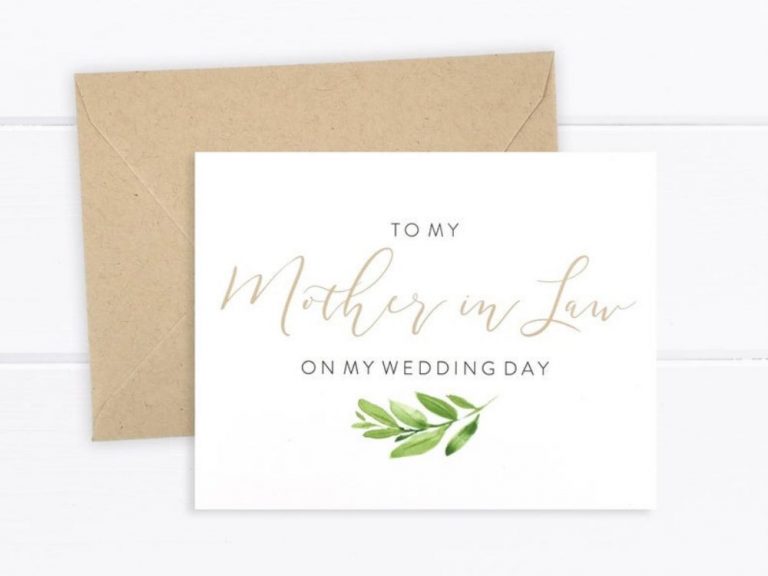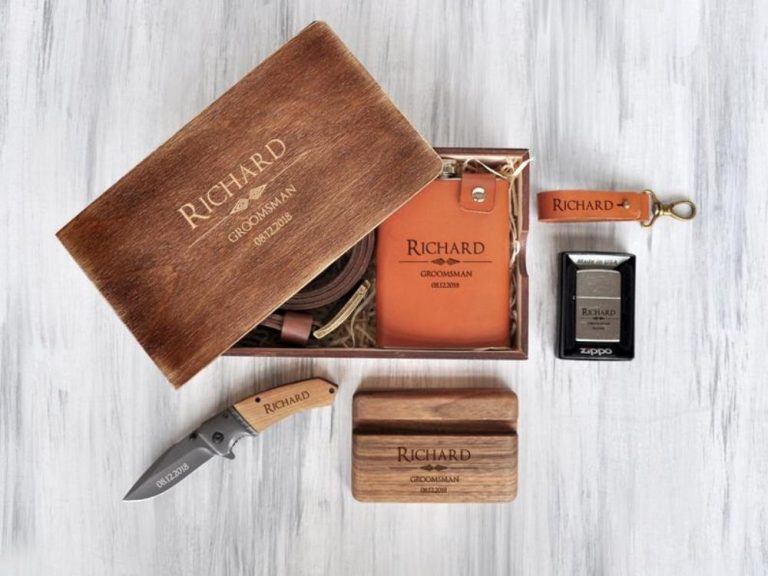Wedding ring metals should be chosen carefully to cater to both the bride and groom. There are some pros and cons to each kind. This article will guide you on choosing the best rings for your wedding.
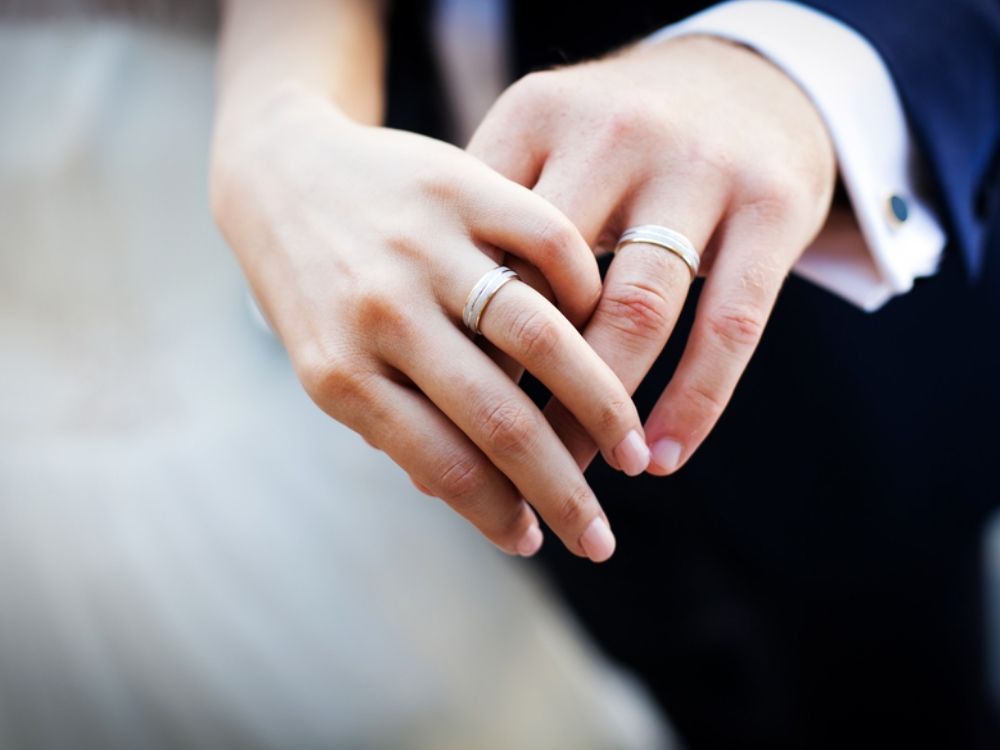
A wedding is not complete without the wedding rings. It has been a symbol of love and unity for ages. Also, a universal sign to show your commitment to your partner. The rings are usually in a box or on a pillow and carried by a ring bearer. It has been a tradition in ceremonies that couples exchange rings and recite vows. This is one of the most emotional parts of the ceremony.
Choosing a wedding ring is not only about the design and style but also about the metal that the ring. There are a variety of wedding ring metals to choose from. There are also pros and cons of each kind of metal that you’ll want to consider before buying. You just have to choose what both of you prefer and what fits in your wedding budget. Here are some of the most known and used wedding ring metals that you can choose from.
Gold
Gold has been used as a form of currency for centuries. It has been a symbol of wealth and royalty. It has long been the most desirable metal and has great value. The purity of gold is measured by karat.
Gold Karat Meanings & Percentages
- 24 karat: 100% gold
- 22k: 92% gold
- 18k: 75% gold
- 14k: 58% gold
- 12k: 50% gold
- 10k: 41% gold
- 9k: 37% gold
Other metals that are mixed with the gold are called alloys. Alloys can vary from zinc, silver, copper, nickel, and other metals. The color of the gold depends on what alloys are in with them. You can either have yellow, white or rose gold. There are some pros and cons to each kind.
Yellow Gold
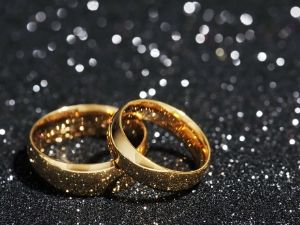
Pros:
- Gold costs less than platinum and is just as beautiful.
- Gold is lighter in weight than platinum and a Tungsten Carbide
- It has a very flattering hue for most people and is easy to resize.
- Pure gold rings are more tarnish-resistant.
Cons:
- Can be scratched easily if it is not pure gold and mixed with alloys. It will need polishing once in a while.
- Gold is sensitive to chemicals and can become discolored in chlorine and harsh household chemicals such as bleach.
White Gold
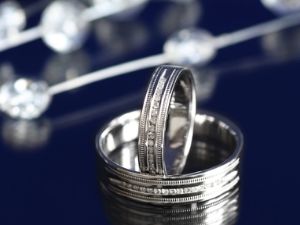
Pros:
- White gold is similar in appearance to platinum but less expensive.
- It does not tarnish, corrode, or rust.
- It is more malleable and easy to work with if you want to design something intricate on your ring.
- There is a wider selection of wedding rings that are white gold.
Cons:
- Always the possibility for a potential nickel allergy.
- You can mistake white gold for silver.
- It will turn yellow over time especially if you’re wearing your ring every day.
- White gold is usually plated with a metal called rhodium for durability, and will likely require replating when the rhodium wears off. You may need to get your ring replated every 1 to 3 years depending on the wear and tear.
Rose Gold
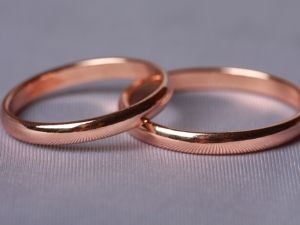
Pros:
- Rose gold does not tarnish but can turn a bit darker over time which is not really a problem since the dark color can look more vintage.
- It is more durable than white or yellow gold.
- Rose gold does not require rhodium plating as white gold does.
- Rose gold tends to be more durable than white or yellow gold, and it’s actually quite affordable.
Cons:
- There is a possibility that a person can be allergic due tue its copper content.
- Rose gold is not as easy to find as white or yellow gold rings.
- Due to it being less common there are fewer design styles to choose from.
Silver
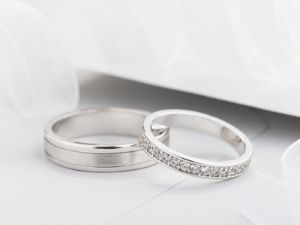
This has also been used as a form of currency throughout history. Sterling silver is one of the finest silver alloys. Nowadays, silver is widely used in jewelry and in other things like cutlery, electronics, and other general-use items.
Pros:
- It is known for its shine and luster. No other metal has the radiance, inner glow and natural brilliance of sterling silver.
- More malleable so it is easier to craft in whatever design you like.
- Affordable compared to Gold and Platinum.
- Fairly easy to resize.
- Lightweight.
Cons:
- Prone to scratching and bending if it takes a beating.
- A bit more expensive than Tungsten or Titanium
- There’s a need for cleaning because of a possibility of tarnishing to maintain shine.
Platinum
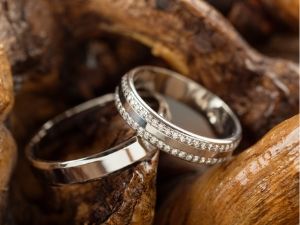
Pros:
- It is a high-end metal. Platinum has a beautiful finish that will look good for a lifetime. It does not lose its luster or shine compared to other precious metals.
- Platinum is completely hypoallergenic. Great for those who have metal allergies.
- One of the rarest precious metals on earth.
- Platinum is low maintenance. It will look beautiful for a lifetime.
- Platinum is the ideal metal for you if you want to set stones and get intricate designs on it. It will bring out the sparkle in diamonds.
Cons:
- It can be a bit expensive since it is rare.
- It is not scratch proof.
- Platinum mines are not eco-friendly.
Palladium
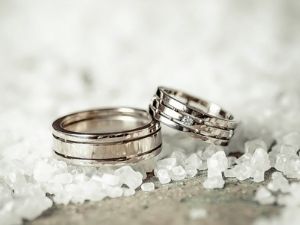
Pros:
- Palladium is less expensive than platinum but has a similar look. You don’t have to replate like white gold.
- Extremely durable and resistant to tarnishing, extreme heat, and exposure to many types of chemicals.
- Hypoallergenic and safe to wear especially for those who have sensitive skin.
- Half the weight of a platinum ring.
- Affordable.
Cons:
- It’s somewhat less durable than platinum and is also relatively rare.
- Resizing and repair can cost you a lot.
- There are limited designs that you can do since it is a metal that is hard to work with.
Titanium
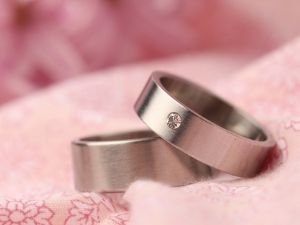
Pros:
- The weight of titanium is the lowest among precious metals and alternative metals.
- Titanium is low in cost. Lower grade titanium can cost as low as $20. Higher grade titanium including aircraft-grade can cost up to $300.
- Titanium has more flexibility than tungsten so there are many styles to choose from.
- Hard to scratch especially for high-grade titanium and the finish remains beautiful.
Cons:
- There are markets that sell very low-quality rings under the titanium name, so make sure to purchase from a reputable dealer.
- Lower quality titanium will scratch easily.
- Not all jewelry stores carry titanium as a wedding band option.
- You can’t resize.
Tungsten
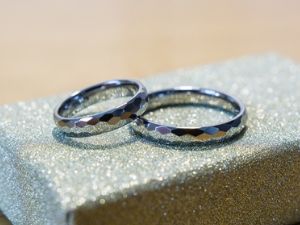
Pros:
- One of the most durable and strong metals in the world. Tungsten Carbide comes in at a 9 on the Moh’s hardness scale. This is just below a diamond. It comes in black, gray, or white.
- Tungsten comes at a very friendly price.
- Remains vibrant and polished over the course of a lifetime.
- It has a finish that is very hard to break down or show scratches. Because of this, it’s a great ring metal for any groom or bride that does physical work.
- You can choose from many styles.
Cons:
- The metal is heavier in weight than other precious metals.
- Can crack or break under pressure due to the extreme hardness of the metal.
- It cannot be resized.
Conclusion
Wedding ring metals have their benefits and drawbacks. It is up to you and your partner to choose the metal that matches your style and needs. No matter what you decide on. Placing that wedding ring on each other’s fingers will be a beautiful reminder to both of you, of your love and commitment to each other.
His Expertise Includes:
- 8 years working in the wedding industry
- Owner of USA DJ a wedding service provider URL: https://usadj.org
- Former groom with first-hand experience planning his own wedding
For the better part of the last decade, Jason has personally helped countless couples create successful wedding.
Since 2018 he has devoted much of his time to creating Smartest Brides with his wife Rachel. His mission is to help remove the stress and anxiety that normally comes with wedding planning by making the process simple.
- Wedding Shots That Should Not Be Missed - September 26, 2019
- Wedding Emcee: How To Choose The Right One For The Wedding - August 29, 2019
- 20 Wedding Gift Ideas For Your Groomsmen On The Wedding Day - August 15, 2019


